COMPUTATIONAL AERODYNAMICS
An efficient edge based data structure has been implemented within the HEMLAB solver for a three-dimensional vertex based finite volume algorithm in order to demonstrate its efficiency compared to the classical edge based implementations. In the present approach, the data structure is tailored to meet the requirements of the algorithm by considering the data access pattern and cache efficiency. The present data structure is not limited with tetrahedral elements, arbitrary polyhedral elements are also supported in the mesh without putting any additional effort.
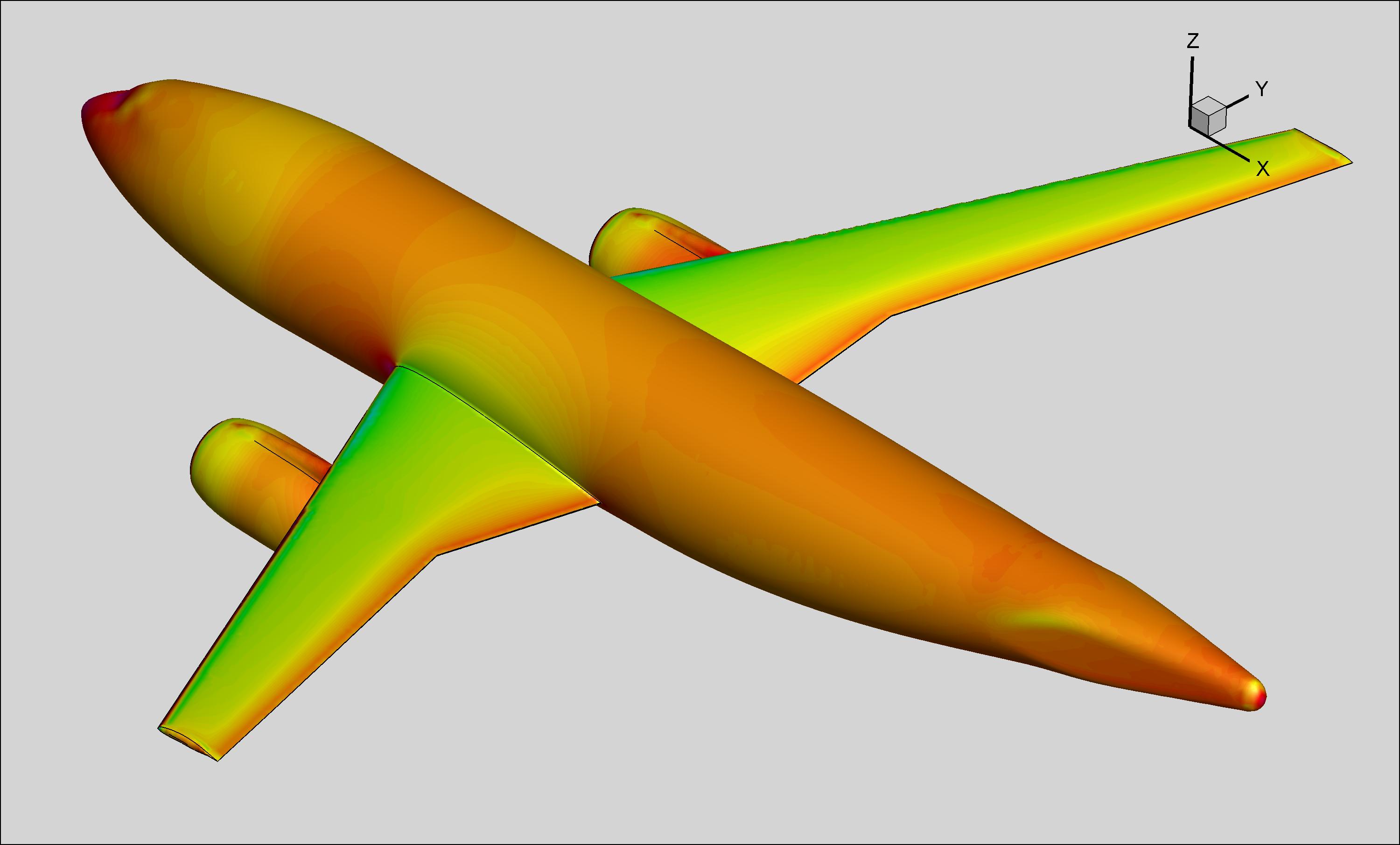
The inviscid pressuressure distribution around the DLR-F6 configuration at Mach 0.375 (subsonic) and alpha=0 (S. Akkurt).
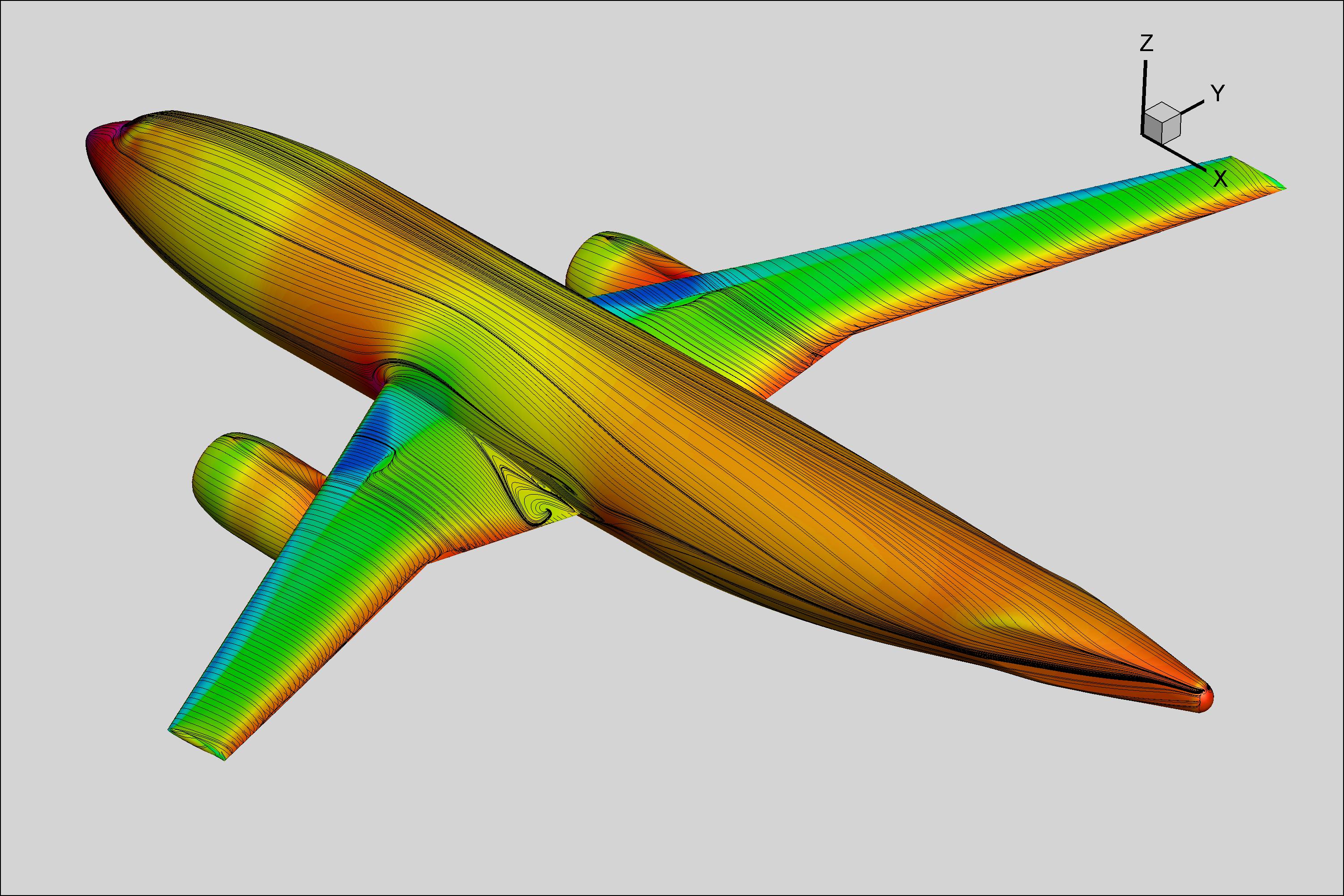
The viscous pressuressure distribution with skin friction lines around the DLR-F6 configuration at Mach 0.75 (transonic), Re=3M (based on mean chord) and alpha=1 (SA model). Second AIAA Drag Prediction Workshop (DPWII-WBNP).
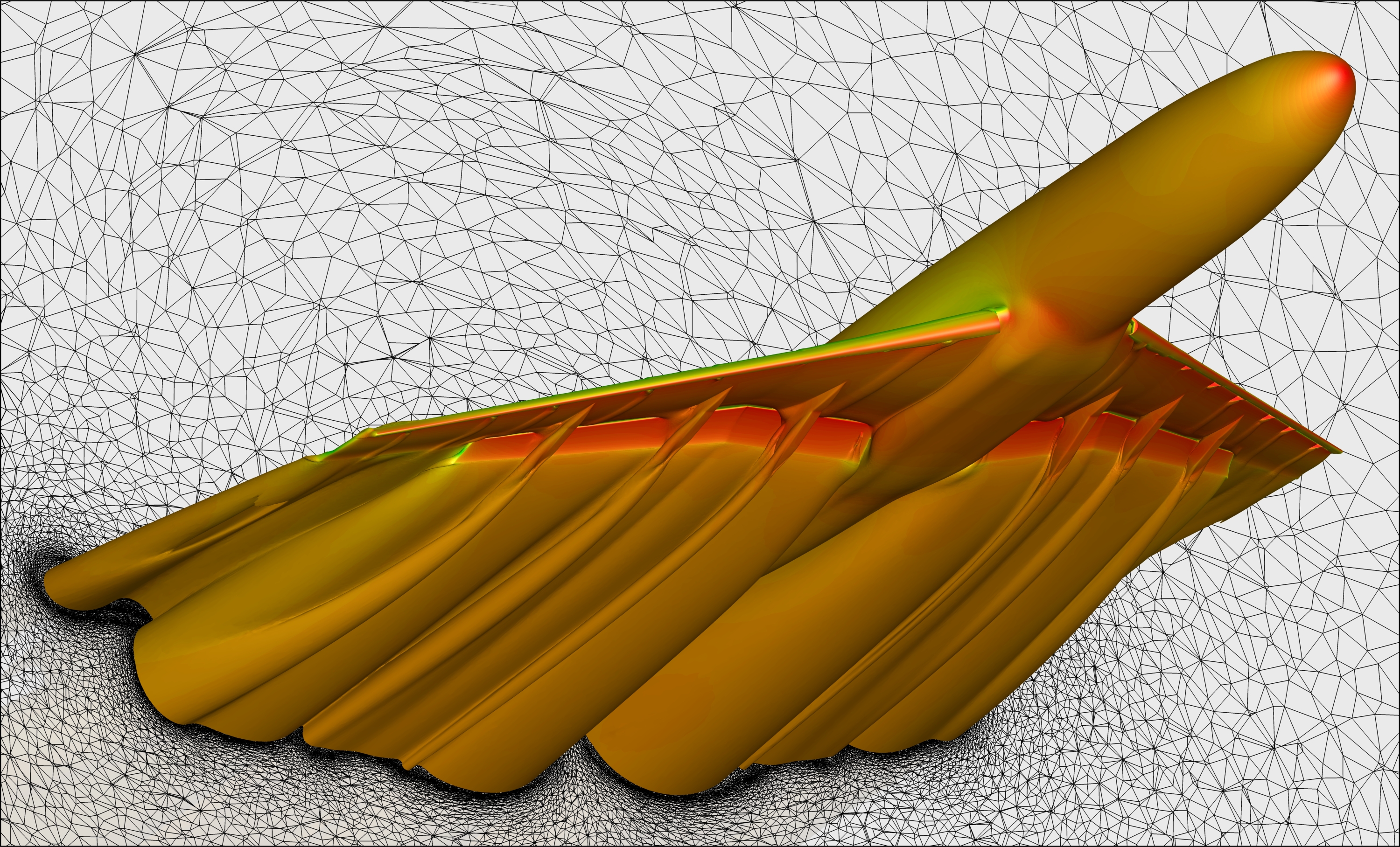
The wake of JAXA high lift configuration (case 2b) with pressure distribution at Mach=0.172, Re=1.93M (based on mean chord) and alpha=4.36 (H. Sukas). Third AIAA High Lift Prediction Workshop (HEMLAB+PyAMG).
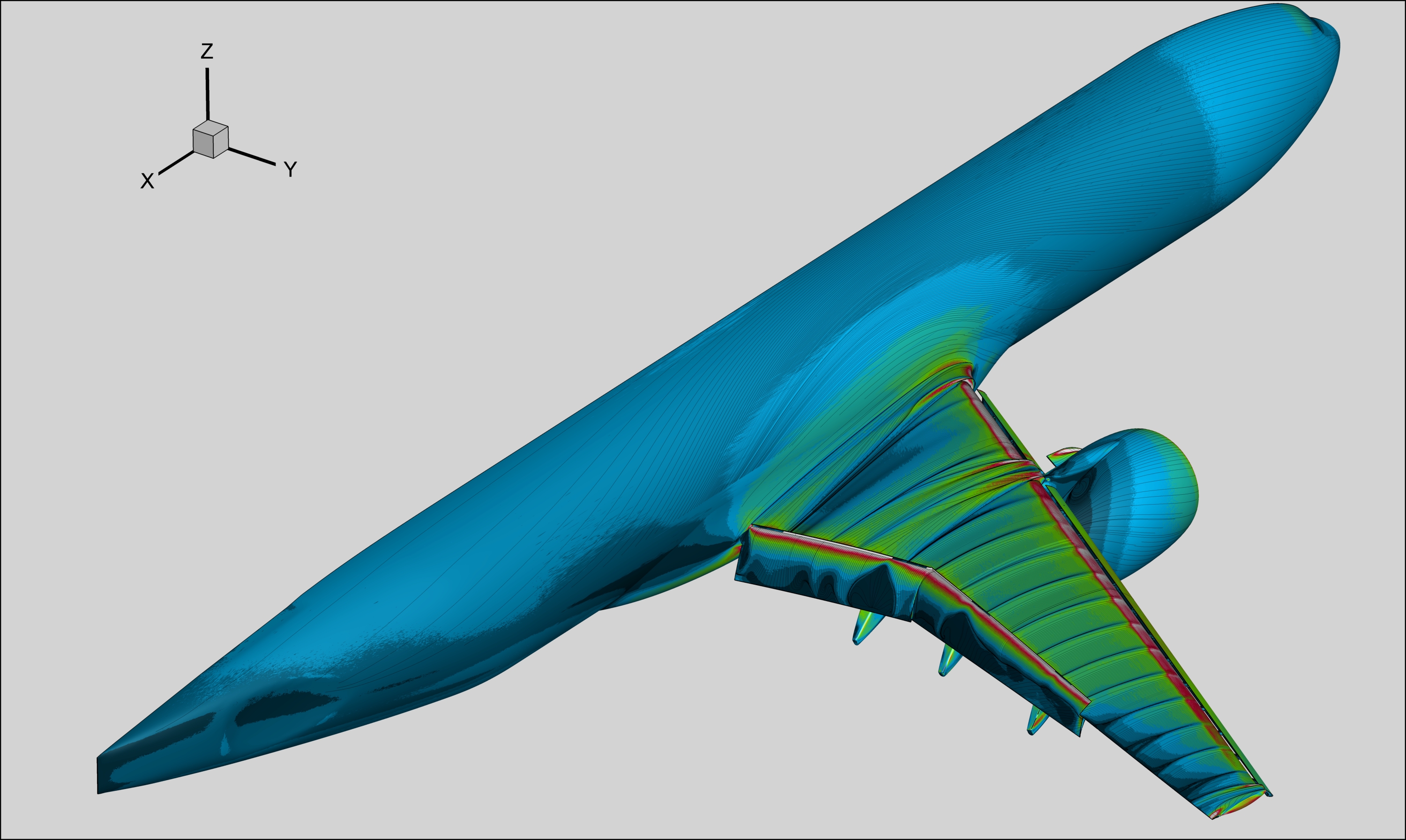
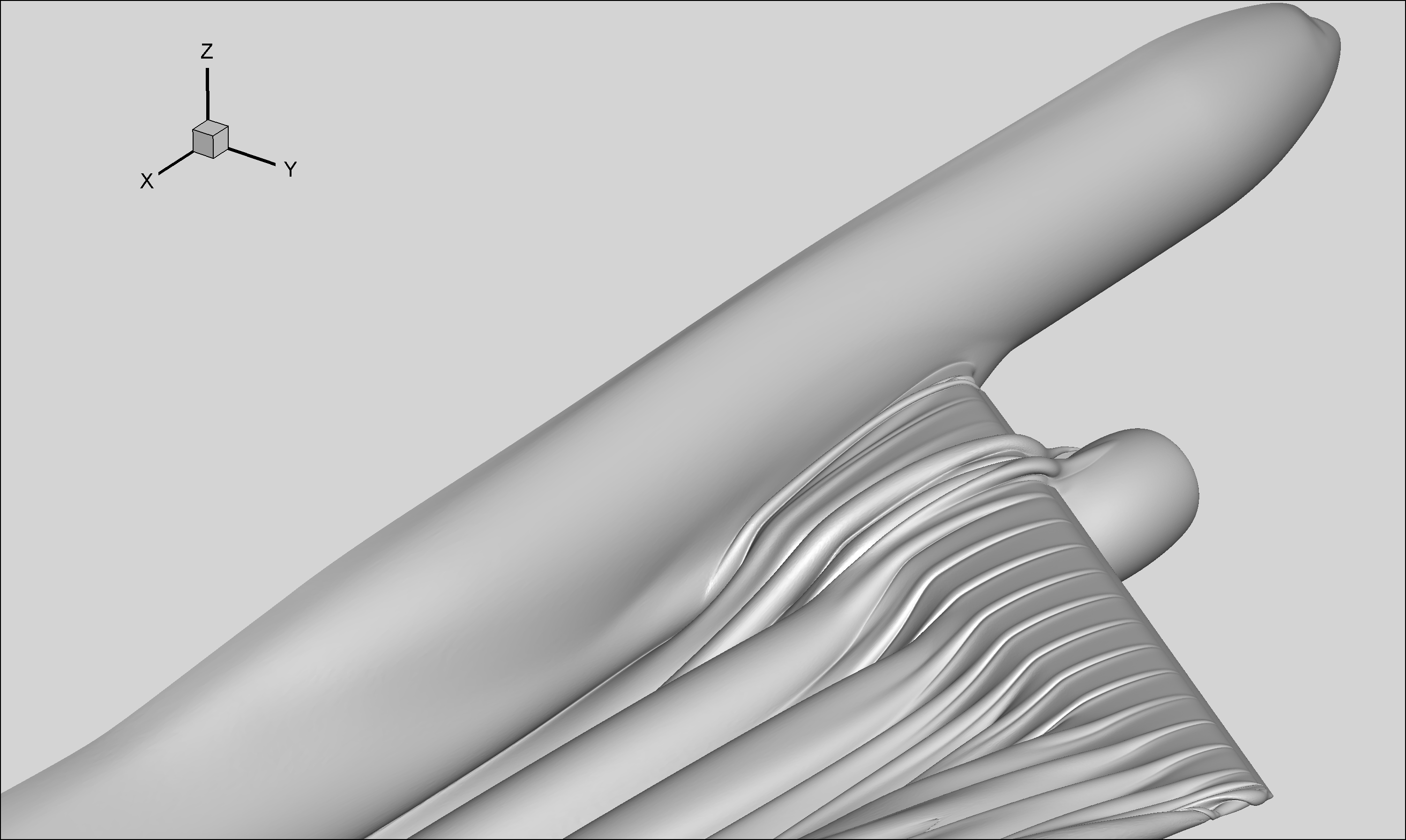
NASA CRMHL high lift configuration (case 1a) with skin friction distribution (left) and entropy isosurface 0.001 (right) at Mach=0.2, Re=5.49M (based on mean chord) and alpha=7.05. Fourth AIAA High Lift Prediction Workshop (HEMLAB+PyAMG). The adapted mesh consists of 600,730,478 tetrahedral elements and 103,057,639 vertices.